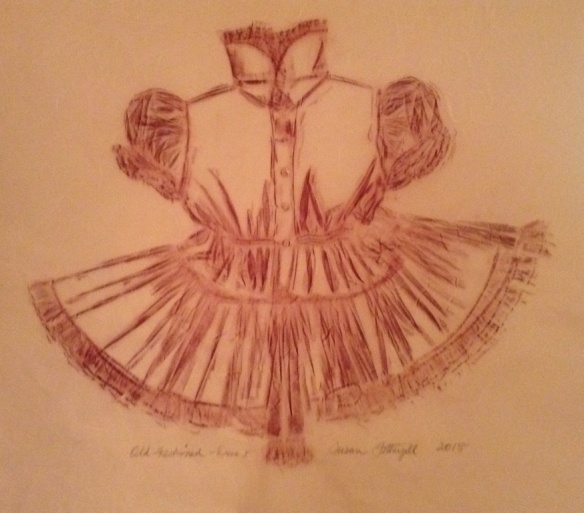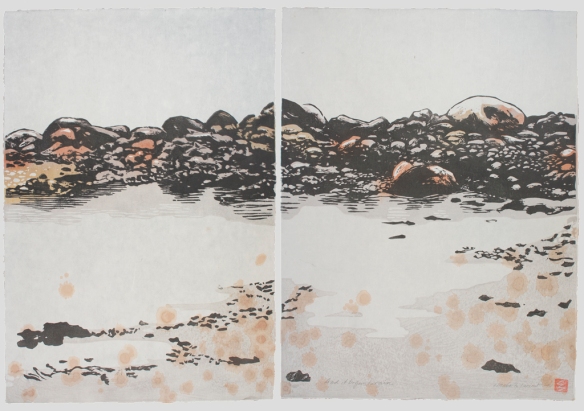Daily Practice
My prints are created through the process of layering images, hand written script and areas of colour together. The images, text and drawings are taken from observations in daily life. The text is not meant to be legible, but to suggest bits of past memories and thoughts, as in a journal or diary. I use many layers and several printmaking processes in each print.
I spend a lot of time twisting and stretching my body into different poses in my daily ashtanga yoga practice. The silhouetted figures shown in these works are performing different yoga poses, or asanas, in particular ones that I am finding challenging to do in their “ideal” form at the moment. The point of doing these daily asanas is to train your body and mind to stay in a pose for 5 deep, calm breaths even though it may feel physically uncomfortable, so that we can take this calm approach in the face of difficulty and stress into daily life.
The images of the people doing the poses are solid, calm and still, in contrast to the backgrounds, which are loud, busy and frenetic. The background images come from a stack of prints that I recently discovered in my parent’s basement where they had sat forgotten since I made them over 20 years ago. The number of layers and hours that went into these prints, as well as the energy and adolescent angst in some of them is like finding a lost diary, a window into my past. I tore each of the old prints into many smaller pieces, and found spaces to fit the figures into the new landscapes and compositions of the print remnants. The resulting images represent a calm, still presence in the face of chaos. Through practicing the yoga postures one hopes to build a layer of protection from the elements, and a way to find stillness in the present moment.
Biography
Anne Abbass is a Toronto based artist and printmaker. She holds a BFA from Queens University (1993). Anne was awarded the Don Phillips Scholarship at Open Studio in 1994 and has been an artist member of Open Studio since then. She has worked as a user experience consultant for websites, and now spends her time at home with her three young kids. She currently sits on the board of Open Studio and works from her home studio.







